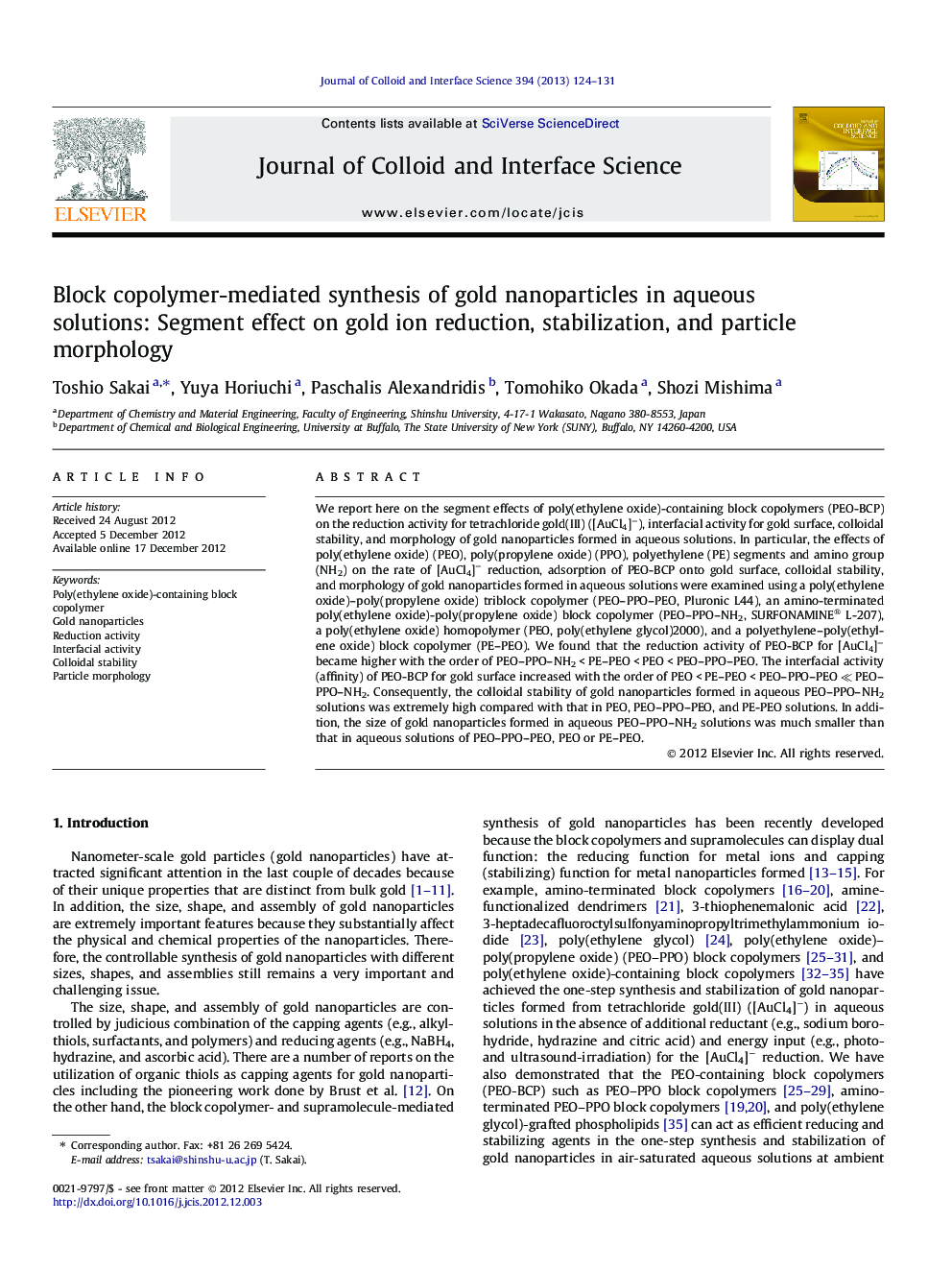| Article ID | Journal | Published Year | Pages | File Type |
|---|---|---|---|---|
| 607753 | Journal of Colloid and Interface Science | 2013 | 8 Pages |
We report here on the segment effects of poly(ethylene oxide)-containing block copolymers (PEO-BCP) on the reduction activity for tetrachloride gold(III) ([AuCl4]−), interfacial activity for gold surface, colloidal stability, and morphology of gold nanoparticles formed in aqueous solutions. In particular, the effects of poly(ethylene oxide) (PEO), poly(propylene oxide) (PPO), polyethylene (PE) segments and amino group (NH2) on the rate of [AuCl4]− reduction, adsorption of PEO-BCP onto gold surface, colloidal stability, and morphology of gold nanoparticles formed in aqueous solutions were examined using a poly(ethylene oxide)–poly(propylene oxide) triblock copolymer (PEO–PPO–PEO, Pluronic L44), an amino-terminated poly(ethylene oxide)-poly(propylene oxide) block copolymer (PEO–PPO–NH2, SURFONAMINE® L-207), a poly(ethylene oxide) homopolymer (PEO, poly(ethylene glycol)2000), and a polyethylene–poly(ethylene oxide) block copolymer (PE–PEO). We found that the reduction activity of PEO-BCP for [AuCl4]− became higher with the order of PEO–PPO–NH2 < PE–PEO < PEO < PEO–PPO–PEO. The interfacial activity (affinity) of PEO-BCP for gold surface increased with the order of PEO < PE–PEO < PEO–PPO–PEO ≪ PEO–PPO–NH2. Consequently, the colloidal stability of gold nanoparticles formed in aqueous PEO–PPO–NH2 solutions was extremely high compared with that in PEO, PEO–PPO–PEO, and PE-PEO solutions. In addition, the size of gold nanoparticles formed in aqueous PEO–PPO–NH2 solutions was much smaller than that in aqueous solutions of PEO–PPO–PEO, PEO or PE–PEO.
Graphical abstractFigure optionsDownload full-size imageDownload high-quality image (231 K)Download as PowerPoint slideHighlights► Synthesis of gold nanoparticles through [AuCl4]− reduction by PEO-containing block copolymer. ► High reduction activity of PEO–PPO–PEO for [AuCl4]− in aqueous solutions. ► Extremely high interfacial activity (affinity) of a PEO–PPO–NH2 for gold surface. ► High colloidal stability of gold nanoparticles in an aqueous PEO–PPO–NH2 solution. ► Nanometer-sized gold nanoparticles formed in an aqueous PEO–PPO–NH2 solution.
